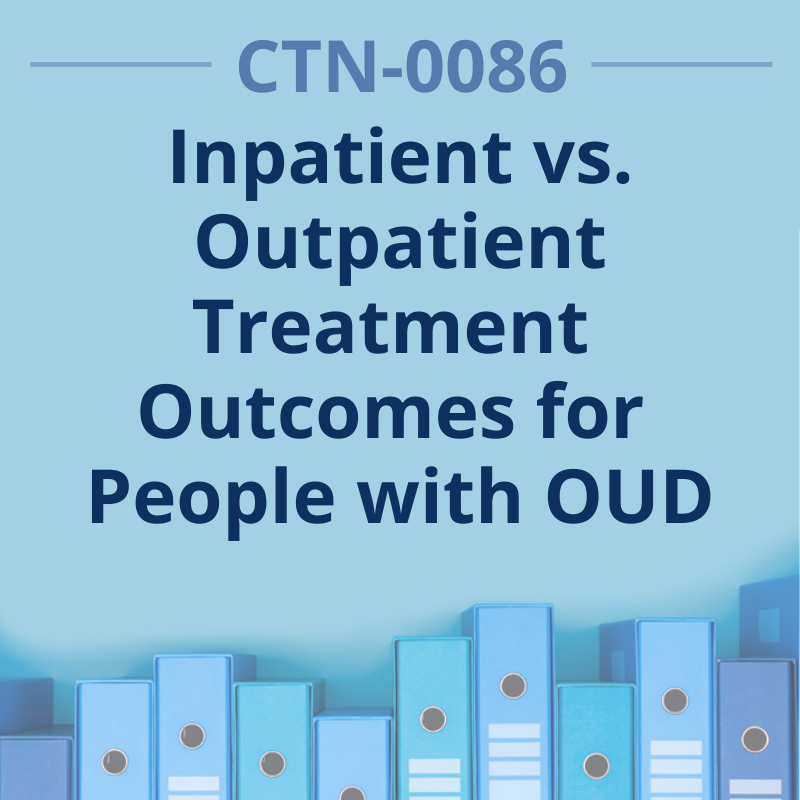CTN-0086: Inpatient versus Outpatient Treatment Outcomes for People with Opioid Use Disorder

Dan Hartung, PharmD, MPH
Lead Investigator
Oregon State University/Oregon Health & Science University
hartungd@ohsu.edu
This data mining study uses an existing multi-state linked administrative data set to compare opioid-related outcomes among adults admitted for treatment of opioid use disorder (OUD) in outpatient and inpatient (or residential) facilities. These data will be used to predict how to improve treatment retention. The study design is an observational retrospective cohort secondary data analysis of Medicaid recipients admitted for OUD in Oregon and Oklahoma from 2014 to 2017. The project leverages an existing, unique linked dataset comprised of Medicaid, Treatment Episodes Data Set (TEDS), and Vital Statistics data in Oregon and Oklahoma. The comparison groups are defined by American Society of Addiction Medicine (ASAM) placement levels which include outpatient, residential, and inpatient admissions. The primary analysis compares individuals receiving outpatient treatment relative to those receiving treatment in a residential or inpatient setting. The project further distinguishes between long- and short-term stays (<=28 or >28 days). To ensure complete ascertainment of baseline characteristics and outcomes, the study only includes individuals with at least 6 months of Medicaid eligibility before their admission.
Funded by the NIH HEAL Initiative®.
Primary Findings
Of 3293 individuals treated for OUD, 957 (29%) received treatment in a residential facility. MOUD use was higher among those treated as an outpatient (43%) compared to residential (19%). The risk of opioid overdose (aHR 1.39; 95% CI 0.73–2.64) or an opioid-related emergency department encounter or admission (aHR 1.02; 95% CI 0.80– 1.29) did not differ between treatment settings. Independent of setting, MOUD use was associated with a significant reduction in overdose risk (aHR 0.45; 95% CI 0.23–0.89). Residential care was associated with greater odds of retention at 6-months (aOR 1.71; 95% CI 1.32–2.21) but not 1-year. Residential treatment was only associated with improved retention for individuals not receiving MOUD (6-month aOR 2.05; 95% CI 1.56–2.71) with no benefit observed in those who received MOUD (aOR 0.75; 95% CI 0.46–1.29; interaction p=0.001). Conclusions: Relative to outpatient treatment, residential treatment was not associated with reductions in opioid overdose or opioid-related ED encounters/hospitalizations. Regardless of setting, MOUD use was associated with a significant reduction in opioid overdose risk.

Primary Outcomes Article: Hartung DM, et al. Association between treatment setting and outcomes among Oregon Medicaid patients with opioid use disorder: A retrospective cohort study. Addiction Science & Clinical Practice 2022;14:45.
Related Resources
Node Involvement
Lead Node(s):
All Participating Nodes: